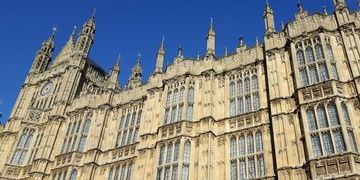Naomi Weir takes a look at the latest OECD R&D intensity figures
International R&D investment update
15 Feb 2017
Last week saw the latest publication of the OECD R&D intensity figures. Amongst other things it is a periodic reminder of how other countries’ investment in R&D dwarfs that of the UK.

The figures are for 2015 so don’t yet take into account the significant additional public investment announced at the 2016 Autumn Statement.
On its own the additional public funding doesn’t make much of a dent in the overall figures. Current GERD including the recently announced £2bn a year increase comes to 1.78% of GDP. Once the Industrial Strategy is up and running the expectation would be that the increase in public funding, carefully used, will start to have an impact on private R&D investment levels. (Based on evidence that public investment in R&D crowds in private investment) Taking an estimate of the proportions of public-private investment as a guideline the full effect of additional £2bn a year could result in a £4bn increase from private sources. If this happened, UK GERD could reach 2% of GDP.
That is a long way from where we’ve been, lingering at the bottom of the table around 1.7% of GDP. But despite being a significant leap which would reflect significant increased R&D activity across the UK, which is not to be sniffed at (!), it would still leave us with a below average R&D intensity compared to the EU28 and well below the OECD average of 2.4%.
In most meetings I am in these days, it is difficult to avoid the subject of Brexit. So too here as all of this takes on a slightly different urgency with the UK’s impending departure from the EU. At the Autumn Statement CaSE called on the Government to make a plan to reach 3% of GDP across public and private sources being invested in R&D by 2025. And we’ve made a good start. The Government have put in significant funding. They have kicked off plans for an industrial strategy with science and innovation as a central pillar of their plans, creating a vehicle to encourage, incentivise, and attract R&D activity and investment to the UK.
We still believe the UK should be aiming higher in the long term. And to reach the Prime Minister’s aims of being the UK to be the “go-to place for scientists, innovators and tech investors” and of “ensuring a positive outcome for science as we exit the European Union” we must be ambitious for the long-term. It is no longer a case of simply building on a historically strong position but there is significant uncertainty to mitigate, potential funding drops from EU sources to address, and a need to square the circle between an economic and reputation damaging direction of travel on immigration policy and the aim of being a “go-to” place for science and innovation.
Related resources

This synthesis draws out key policy implications from the findings of a report commissioned by the British Academy and CaSE. The systems-based analysis of the strengths and weaknesses within the UK’s innovation system, ‘From Research to Productivity: A Systems Analysis of UK Innovation Pathways’, was conducted by Cambridge Econometrics.

In 2024, the British Academy and CaSE commissioned Cambridge Econometrics and the Innovation and Research Caucus to conduct this systems-based analysis of the strengths and weaknesses within the UK’s innovation system.

CaSE’s comprehensive analysis of the measures that impact R&D announced in the 2025 Spending Review

CaSE’s response to the House of Lords Science, Innovation and Technology Select Committee inquiry into: Financing and Scaling UK Science and Technology: Innovation, Investment, Industry.